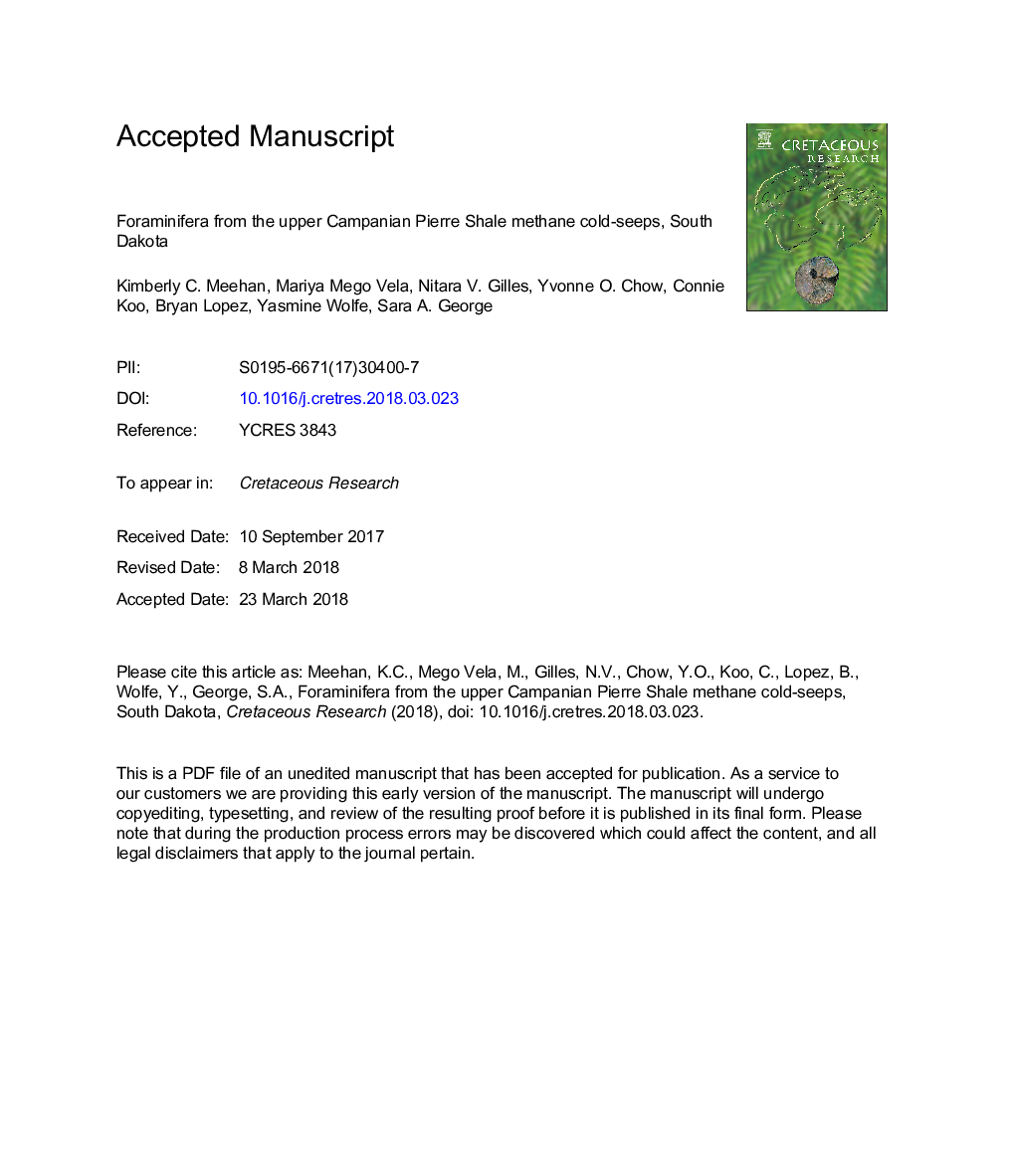| کد مقاله | کد نشریه | سال انتشار | مقاله انگلیسی | نسخه تمام متن |
|---|---|---|---|---|
| 8916236 | 1642034 | 2018 | 55 صفحه PDF | دانلود رایگان |
عنوان انگلیسی مقاله ISI
Foraminifera from the upper Campanian Pierre Shale methane cold-seeps, South Dakota
دانلود مقاله + سفارش ترجمه
دانلود مقاله ISI انگلیسی
رایگان برای ایرانیان
موضوعات مرتبط
مهندسی و علوم پایه
علوم زمین و سیارات
فسیل شناسی
پیش نمایش صفحه اول مقاله

چکیده انگلیسی
Investigations into ancient benthic foraminiferal populations are limited, particularly in the Late Cretaceous methane cold-seeps of the Western Interior Seaway. Poorly lithified shale samples (400 cc) from 8 methane cold-seeps and one coeval non-seep locality from the upper Campanian Pierre Shale in South Dakota were disaggregated, sieved, and examined for specimens (>150 μm). Seeps yielded between 100 and 148 specimens per locality. The foraminiferal populations found at seeps and the single non-seep locality contain many of the same species. The most abundant benthic genera found at late Campanian seeps in South Dakota include Guardryina, Haplophragmoides, Trochammina, buliminids (Buliminella and Praebulimina), Lagena, and Gavelinella. Planktic foraminiferal assemblages are much less diverse and dominated by Globigerinelloides. Only two seeps and the non-seep locality contain biserial species, these localities fall in the Baculites compressus zone. The foraminifera from both seeps and the non-seep have Shannon-Weiner (ln) and Fisher's diversity indices that show that the foraminiferal populations are of moderate diversity with a small peak in seeps from the Baculites compressus Zone. Agglutinate to calcareous ratios are consistent for nearly all seep localities, however, one seep locality (AMNH loc. 3528a) and the non-seep sample render a slightly higher percentage of agglutinated species, these localities are within the Baculites compressus Zone. We conclude that, like their modern counterparts: 1) there is no evidence of unique physiological differences between seep and non-seep foraminifera, 2) the species found in seep environments are most likely more tolerant of seep conditions, and 3) there are no seep obligate species.
ناشر
Database: Elsevier - ScienceDirect (ساینس دایرکت)
Journal: Cretaceous Research - Volume 89, September 2018, Pages 235-247
Journal: Cretaceous Research - Volume 89, September 2018, Pages 235-247
نویسندگان
Kimberly C. Meehan, Mariya Mego Vela, Nitara V. Gilles, Yvonne O. Chow, Connie Koo, Bryan Lopez, Yasmine Wolfe, Sara A. George,